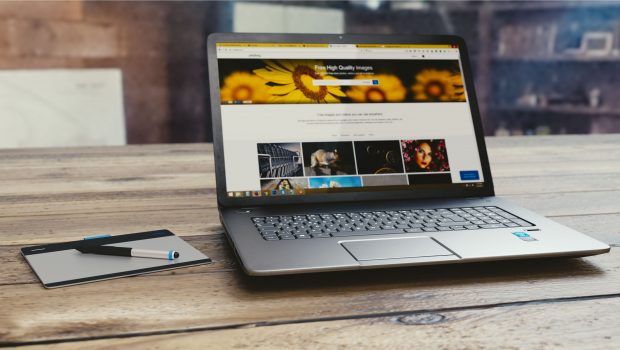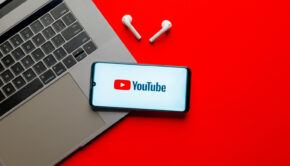7 Creative Ideas to Increase Your Webpage Visibility
If you were to start a business today or maybe you are a budding professional and simply want to make your presence online, your primary goal would be one –- get discovered, get noticed.
In the days past, there was just one way to go about it – create content with paid and manipulative link building which got you high rankings for a bunch of keywords that did well on Google results. It was about playing and tricking the system into getting you the best spots.
Today, rather than slapdash attempts, build a strong SEO strategy to stay on top of the ever-changing ecommerce landscape.
Best Spots on Google’s SERP
Things have changed quite a bit now. First, Google is very good at detecting and punishing false links. It has sophisticated algorithms in place for locating great content and punishes webpages for having artificial links (including legal fines, in case of an extremely serious infraction, and/or a simple push down the line on Google’s search engine results page).
Second, Google’s Universal results list includes every bit of useful data that you can imagine browsing today, such as, news items, videos, images, maps, etc.
Third, there’s an option of paid advertisements which means that the paid-for webpages make their appearance top of the list, pushing those organic, best-deemed results further down the line.
Why Online Visibility Matters
This is about being found wherever conversations (searches, etc.) are happening relevant to your website’s theme – think potential customers, rival organizations, etc. Instead of a few primary keywords, smart businesses should focus on being visible online for the many keywords and phrases used by potential clients and customers who have a problem or are looking for solutions.
The point is to become a useful online resource for the people, so that traffic keeps coming to your webpage to fulfil their needs.
Increase Your Web Page Visibility
Here are some tips to increase your web page visibility for better ranking and results.
Search Engine Optimization (SEO)
A search engine functions as an answering machine to our queries; it goes about the process by looking through the scores of documents available online on the subject (that contain the keywords from your query), and returns the relevant results in a descending order of popularity.
That tells you two things: the content on a webpage looking to become more visible ought to be relevant to the targeted keywords and to be considered popular by the search engine giant (since that is the most popular search engine), Google.
Google recommends doing the following:
- Design the content on your pages for the end-user rather than attempting to present it differently
- The website should be designed with a clear hierarchy; each webpage reachable from a static text link
- the content on your website should be useful and rich in detail
Pillar Content and Topic Clusters
Pillar content refers to your primary idea relevant to your business/webpage that lends the opportunity for more in-depth articles to be composed and linked back to the core article.
Creating SEO-friendly content that ranks well requires a hefty investment of time and consistency. It is not a process that may yield results overnight, especially since search engine algorithms are constantly evolving. Search visibility and rankings will improve when new content will be generated on a constant basis.
When you create content in clusters, it will be better linked together and will also allow the search engine to see how the different pieces of content are related to each other. If your pillar content is about casual dresses that your webpage is selling, then an example of topic clusters may include different dresses in the market, the benefits of being casually dressed, etc.
All these articles must link back to the pillar content and vice versa. Such methodology will not only be beneficial for SEO ranking, it will mean that you are dedicated to creating useful content for your users.
Mobile-Friendly Website
According to Hitwise, nearly 60% of searches done on Google are made via mobile devices. A person typing his query on mobile phone would access the results instantly, making it imperative that your webpage be clearly visible on such a device to encourage the user to take the next step.
This ensures webpage conversion. It implies that not only should your webpage be enhanced for visibility on every mobile device, the loading time for your webpage (or the page speed) should be fast.
Google has clearly mentioned that the loading time is also one of the factors considered by its algorithms for SERP ranking.
Pay-Per-Click Marketing
Pay-Per-Click is a form of marketing that incurs a cost for you every time someone clicks on your ad, regardless of its position or the number of times the ad was displayed. Since these ads appear topmost on Google’s SERP, marketers bid for their ad’s position and for the keywords that (when searched) will bring up your ad.
The advertisements usually appear above and below the non-paid (organic) search results. PPC gives quick results, especially if you tailor your content accordingly that is clear and useful for the user who happens to click on the ad. You can even think of a targeted specific phrase, a ‘long-tail search term’, that leads to your ad, bringing in the desired clients to your webpage.
PPC may also generate some junk traffic and run up your costs, which is why your primary focus should not deviate from SEO marketing tools. On its own, PPC advertising is not a long-term strategy.
Social Media Tools
Once you get in the process of generating quality content on a regular basis with appropriate keywords and linking, you want it shared on the sites generating the most traffic.
Social media is your most powerful tool in this regard, for it has people of every dynamic that you can think of, bringing in a variety of possible customers. Remember how Google ranks its search engine results in order of relevance and popularity?
High engagement on social media will tell the search engine that your webpage is popular among users, essentially containing useful information for them. You should also design and target your posts on the different social media platforms, being mindful of the kind of users that populate the network in order to better connect with them.
Blogging
A blog is an informal way to share stories with your users. You can be personal and vulnerable on the blog, inviting your customers to trust you and the brand image that you portray. A blog can also invite others to share their stories of success and failure, presenting a personable and human image of your brand.
The blogs will also generate backlinks to your other pieces of content (the pillar and cluster theory is applicable here too), and they give you an opportunity to introduce alternative forms of content to your website, like videos and podcasts, both of which are very popular forms of content today.
You can make use of old, popular pieces of content from your website in this regard. For example, turn a tutorial into a short explanatory video, or narrate a journey as a podcast. Long form or in-depth pieces of content are especially good to be presented as a series of images that could be shared via platforms like Slideshare for the best response.
However, these forms of content, if designed in a slipshod manner to conserve costs may not give good results. In fact, this may actually turn your webpage’s visitors away for they may feel cheated and betrayed.
Build Local Citations
A local citation is a reference of your business which can be found online by users. There are citations you can build online on famous directories that cater to specific businesses like Yelp, TripAdvisor, etc.
This will ensure a consistent description of your brand on these sites, building a trustworthy popularity that will help the search engine algorithms rank your brand.
Also, users often write reviews of brands on websites, blogs and social media, that you can use to your advantage by responding to them if possible, and taking action if relevant. Sometimes, disgruntled customers are more prone to these citations than happy ones – you can respond to them in a positive manner (by locating these reviews online on the more popular sites), thereby presenting a brighter image for your business.
This is by no means an exhaustive list of creative ideas, but it is one that you can start with and build upon as you go in order to increase the visibility of your webpage. Remember, content is key, and by no means should the process of quality content generation stop if you are to succeed.
















